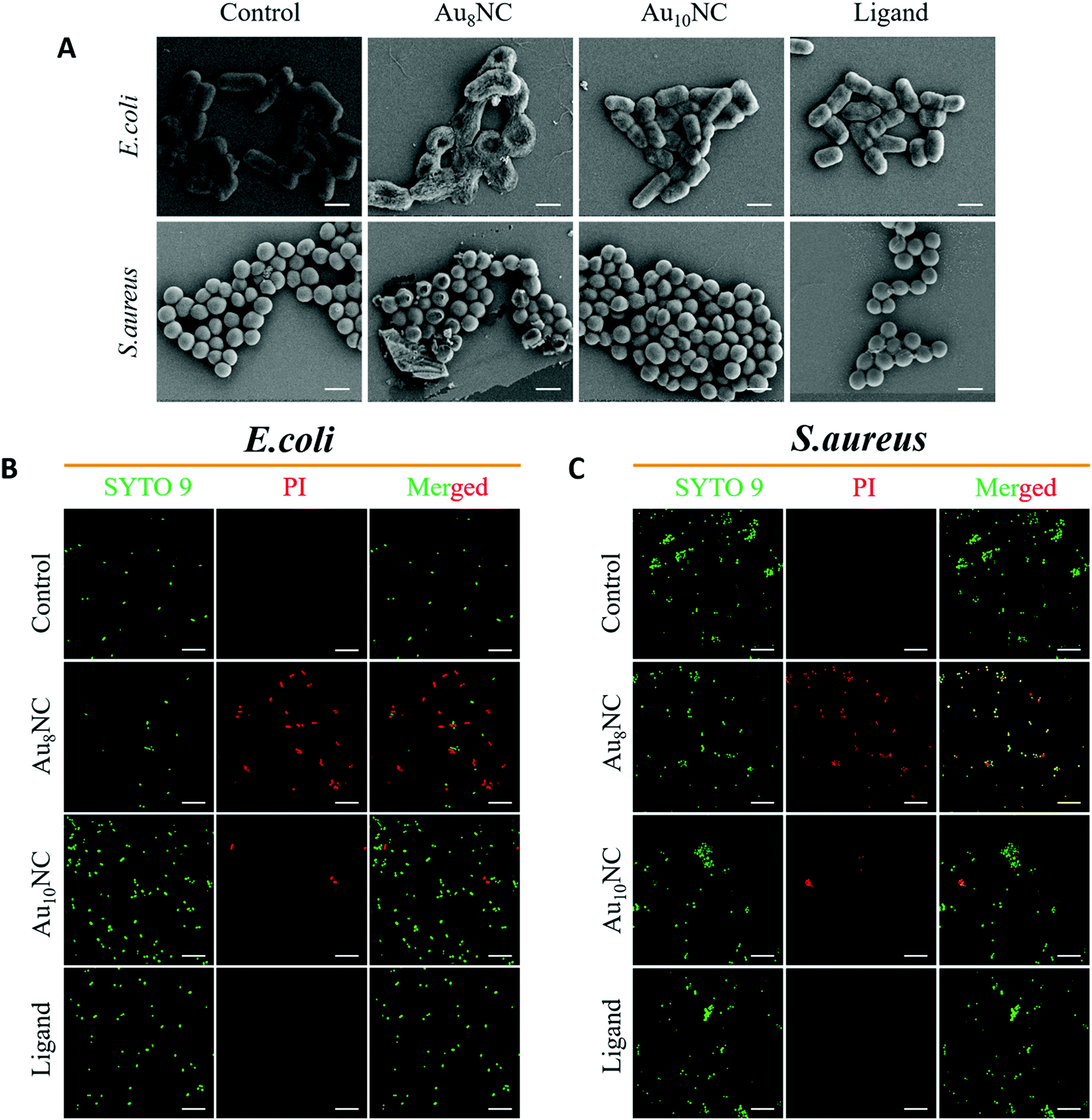Abstract
Gold nanoclusters exhibit significant potential in antimicrobial applications due to their good stability and desirable biocompatibility in the mammalian cell model. However, most of the previously reported gold nanocluster antimicrobial agents do not have an atomic-precise structure, causing difficulties in understanding the structure–property correlation. In this study, structurally defined gold–levonorgestrel clusters, named Au8(C21H27O2)8 (Au8NCs) and Au10(C21H27O2)10 (Au10NCs), with the same ligand-to-metal ratio but different inner cores were prepared for antibacterial activity investigations, demonstrating that Au8NCs exhibited a stronger antibacterial activity owing to the more significant damage it causes on the bacteria wall and membrane, and a stronger inhibition of glutathione reductase activity in bacteria. The leakage of the intracellular components and enzyme inhibition caused an imbalance of the intracellular antioxidant defence system, and consequently killed bacteria. These results indicated that the structure of gold nanoclusters has an important effect on their biological activity, indicating that it as a key factor to consider in the future design of antimicrobial agents.
Read More: https://pubs.rsc.org/en/content/articlelanding/2022/tb/d2tb00533f/unauth



